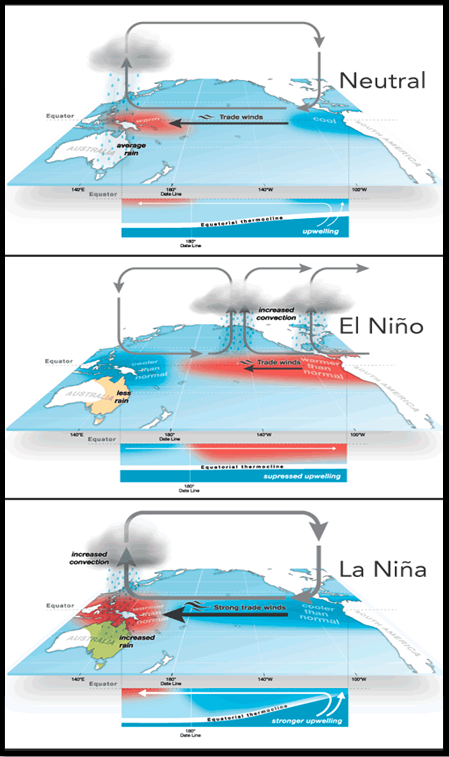EL-NINO, OTHER FACTORS TO CAUSE WARM WINTER
The India Meteorological Department (IMD) predicts a warm winter season across India.
Minimum temperatures are expected to remain higher than normal during the December to February period.
Source: Columbia University
Global Warming Impact:
- Reflects a global warming trend, with India experiencing the third warmest November since 1901.
- 2023, likely to become the warmest year ever recorded on Earth.
Factors Contributing to Warm Winter:
- Western disturbances and an upcoming cyclone in the Bay of Bengal are regional factors impacting winter temperatures.
- El Nino’s Current Status:
- El Nino conditions, characterized by warmer equatorial Pacific Ocean temperatures, reaching their peak.
- El Nino’s influence expected to persist, influencing winter temperatures.
- Impact on Cold Waves:
- Anticipation of fewer and less intense cold waves during the December to February period.
- Cloudiness and Minimum Temperatures:Cloudy conditions caused by western disturbances pushing up minimum temperatures.
- The developing cyclone expected to add to cloudiness, maintaining above-normal minimum temperatures.
About El Nino and La Nina
El Niño refers to the unusual warming of surface waters in the eastern tropical Pacific Ocean, typically lasting for one to two years. This warming leads to a shift in atmospheric pressure and winds, resulting in changes in precipitation patterns worldwide.
La Niña, on the other hand, is characterized by the cooling of surface waters in the eastern tropical Pacific Ocean, also typically lasting for one to two years. This cooling causes a reversal of atmospheric pressure and winds, leading to altered precipitation patterns.
Cyclone “Michaung”:
- Cyclone “Michaung” in the southwest Bay of Bengal moves toward southern coastal Andhra Pradesh and northern Tamil Nadu.
- IMD issues a “red” alert, warning of extremely heavy rainfall over coastal Andhra Pradesh on December 3 and 4.

 Source: Columbia University
Source: Columbia University


